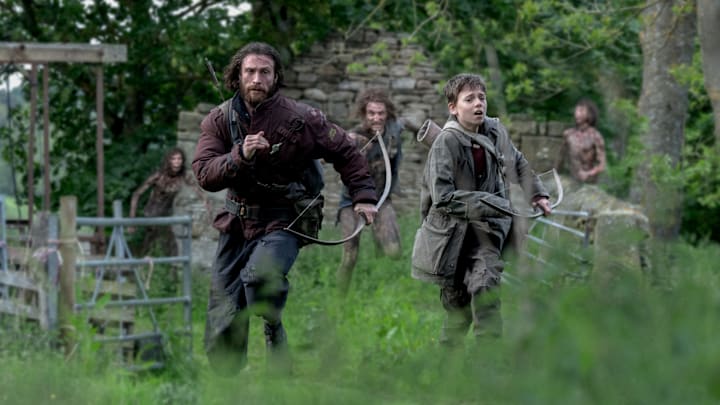Just when audiences felt like they’d seen enough post-apocalyptic zombie stories to last a lifetime, here comes 28 Years Later to reel them back in with a masterfully crafted and thought-provoking story.
With their latest collaboration, director Danny Boyle and screenwriter Alex Garland return to the horror franchise they launched back in 2002. The third installment in the series tells the story of Spike, a 12-year-old boy living in an isolated community in England. Spike’s father has decided that his son is ready to venture into zombie-infested lands, where bows and arrows are the weapons of choice used to hunt down the undead crawling and scavenging through the forest.
Although the film initially feels like an action-packed video game akin to The Last of Us, it’s clear as the story progresses that Boyle and Garland have something different in mind. Tidbits of information about the virus, how it has evolved, and what is happening in wider society outside of Spike’s secluded village are scattered throughout the film, allowing the audience to uncover certain truths along with the protagonist. The world-building revelations, often hinted at but not fully explained, encourage viewers to return to this zombie-fied universe (which, of course, they’ll be able to do when a sequel, 28 Years Later: The Bone Temple, hits theaters in about seven months).
But it’s this teasing of a future installment that results in the film’s one glaring flaw. The last couple minutes of 28 Years Later are bonkers, and not in a good way. The flow of the story is shattered and the profundity of the ending seems trampled upon. This sour aftertaste is unpleasant but ultimately doesn’t prevent the previous 100 or so minutes from being exceptional. Ultimately, 28 Years Later ranks somewhere among the best zombie movies ever made.
And if a superb story isn’t enough to impress, the editing is outstanding, with haunting, stylized images and even archival clips providing context that becomes clearer as the story progresses. Scenes of knights using bows and arrows imply that Spike’s close-knit community has essentially regressed to ye olden times.
Spike's community is small, somewhat ignorant, and glorifies violence; the values are at odds with the more rational and humane lessons he learns. The boy’s coming-of-age journey involves coming to terms with death, which of course in a zombie movie is ever present. But it’s a voyage that necessitates the young hero questioning what he’s been told by his father, who loves his son but also has a tendency to hide the truth.
Also of note is the film’s use of the iPhone 15 Max as its primary camera. As with the original 28 Days Later, the use of simple digital cameras makes the cinematography feel both gritty and realistic (or at least as realistic as a movie about the undead can be). Boyle has never shied away from pushing the boundaries of filmmaking, and it’s a pleasure to see him up to his old tricks again.
To stay up to date on everything fantasy, science fiction, and WiC, follow our all-encompassing Facebook page and Twitter account, sign up for our exclusive newsletter and check out our YouTube channel.
